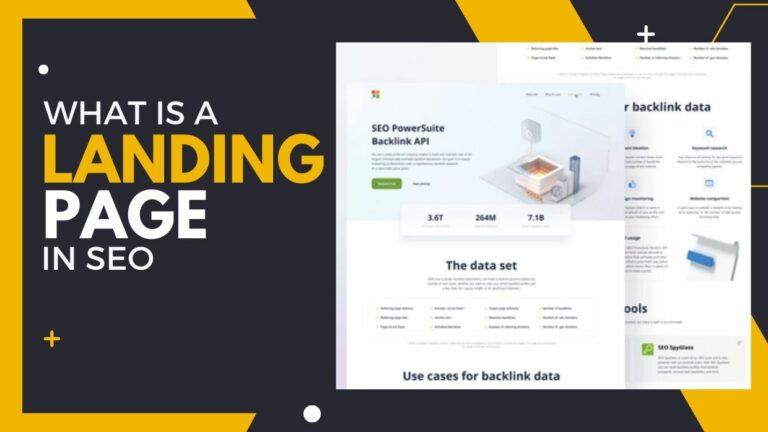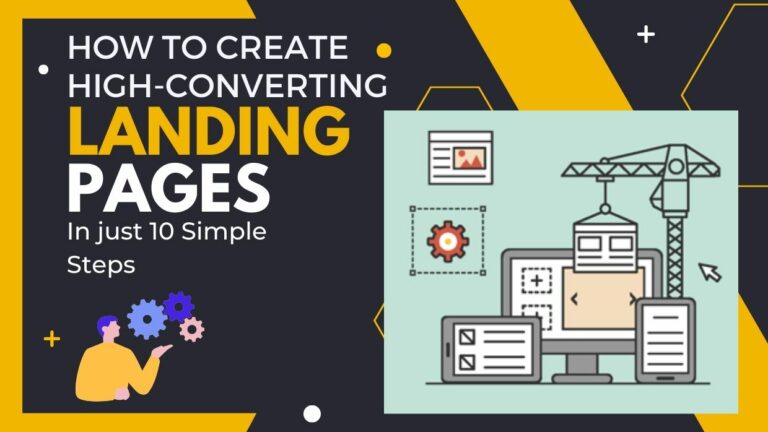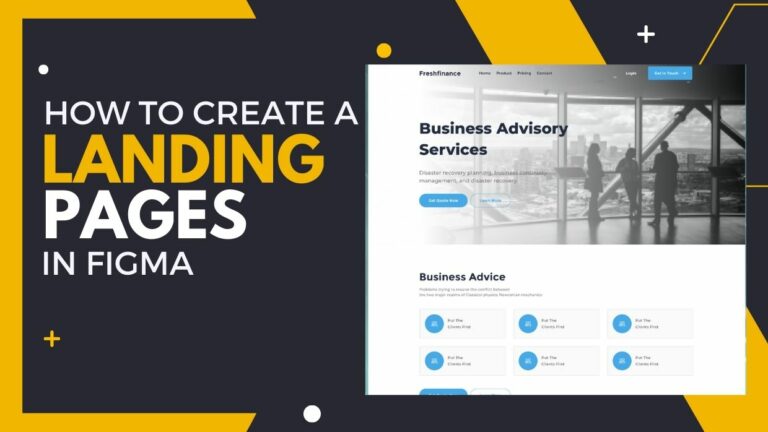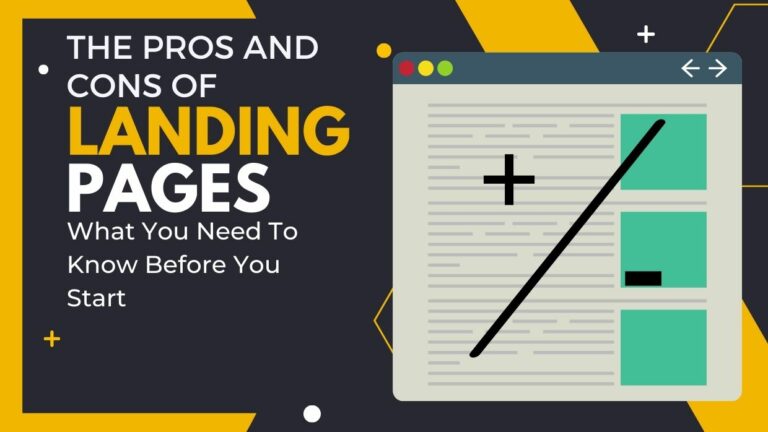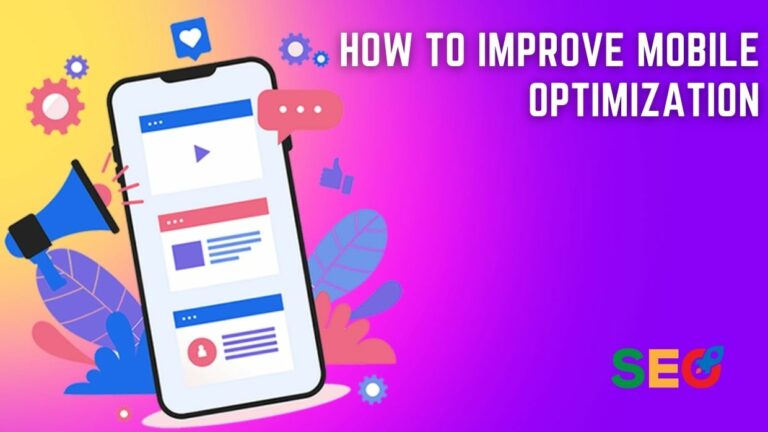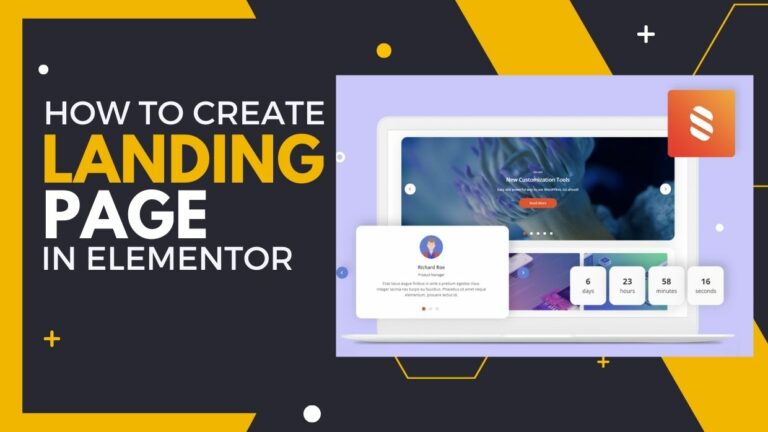What Are The Key Elements Of A Highly Effective Landing Page?
In this article, we’ll explore “What Are The Key Elements Of A Highly Effective Landing Page?” and how to optimize them for maximum success. Having a well-crafted landing page is essential if you want to turn your visitors into customers. But what are the key elements that go into making an effective landing page? So, let’s get started!
What Is a Highly Effective Landing Page?
A highly effective landing page is a web page that is designed to convert visitors into leads or customers. It is typically designed to capture a visitor’s attention and guide them through the sales funnel, such as providing an incentive for them to take action.
Highly effective landing pages should also be optimized for user experience, meaning that the page must have clear and concise content, an attractive design, and easily navigable elements. Additionally, the page should include a call-to-action button that encourages visitors to take the desired action.
What is a Landing Page And How Can It Help Grow Your Business?
Key Elements of a Highly Effective Landing Page
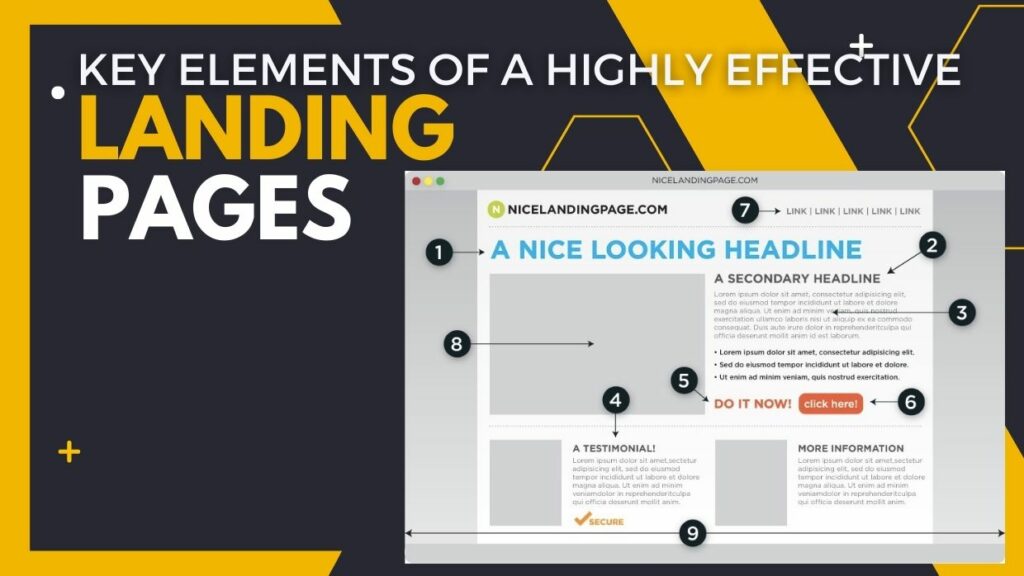
There are several key elements that make up a highly effective landing page. The first is a strong headline that draws the reader in and tells them what they can expect to find on the page.
The second is a clear and concise description of what the offer is and how it can benefit the reader. The third element is a visually appealing image or video that helps to sell the offer.
Finally, there should be a strong call-to-action (CTA) that encourages the reader to take action and sign up for the offer.
When all of these elements are combined, you create a powerful landing page that can help you achieve your marketing goals.
What Are The Different Types Of Landing Pages And Which One Is Best For You?
Headline & Subheadline
Your headline and subheadline are two of the most important elements on your landing page. They need to be clear, concise, and persuasive in order to convince visitors to stay on your page and learn more about your product or service.
Your headline should be attention-grabbing and relevant to your offer. It should also be short enough that it can be easily read and understood. Your subheadline should elaborate on your headline and provide further information about your offer.
Both your headline and subheadline should be effective in order to persuade visitors to stay on your page. Make sure that they are clear, concise, and relevant to your offer.
Visuals & Imagery
When it comes to visuals and imagery, landing pages should be clear, concise, and visually appealing. The goal is to grab the attention of visitors and make them want to stay on the page.
Some key elements to consider when creating visuals and imagery for your landing page include:
- Use high-quality images that are relevant to your product or service.
- Make sure the images are properly sized and positioned on the page.
- Use color schemes that are pleasing to the eye and easy on the brain.
- Use images that help tell a story about your product or service.
- Use calls to action in your imagery to encourage visitors to take action.
Copywriting & Content
Copywriting and content are two of the most important elements of a landing page. Your copy should be clear, concise, and persuasive, while your content should be relevant and useful to your audience.
Together, these two elements will help you create a landing page that is both effective and engaging.
Here are a few tips to keep in mind:
- Make sure your copy is easy to read and understand. Use short sentences and simple words.
- Focus on benefits, not features. What can your product or service do for your customers?
- Address any objections or concerns your customer might have. Why should they choose you over the competition?
- Use images, videos, or infographics to break up your text and add visual interest.
- Include a call to action (CTA) that is clear and concise. Make it easy for your visitors to know what they need to do next.
Benefits & Features
An effective landing page is key to the success of any online marketing campaign. The following are the key elements that make up a highly effective landing page:
- A clear and concise headline that tells visitors what they can expect to find on the page.
- A powerful and persuasive call-to-action (CTA) encourages visitors to take the desired action, such as subscribing to a newsletter or making a purchase.
- Compelling copy that effectively communicates the benefits of taking the desired action.
- An attractive and user-friendly design that makes it easy for visitors to navigate the page and find the information they need.
- Relevant and targeted keywords that help improve search engine ranking and drive traffic to the page.
By including these key elements, you can create a landing page that is highly effective in achieving your desired results.
The Pros and Cons of Landing Pages: What You Need To Know Before You Start
Call to Action (CTA)
A call to action (CTA) is an essential element of a landing page. A CTA tells your visitors what you want them to do next and provides them with a clear path to follow. An effective CTA will be specific, relevant, and actionable.
Your CTA should be placed in a prominent location on your landing page, such as above the fold or in a sidebar. It should be clearly visible and easy to find. The text of your CTA should be short and to the point. It should clearly state what you want your visitors to do, such as “Sign up for our newsletter” or “Download our e-book.”
Your CTA should be relevant to the content of your landing page. It should be closely related to the offer that you are promoting on your page. For example, if you are offering a free e-book on your landing page, your CTA should invite visitors to download it.
Finally, your CTA should be actionable. It should include a strong verb that encourages visitors to take the desired action. For example, instead of simply saying “Download our e-book,” your CTA could say “Download our free e-book now.”
Trust Factors
A highly effective landing page must have certain key elements in order to be successful. These elements include a strong headline, persuasive copy, a clear call-to-action, and trust factors.
Trust factors are those elements that instill confidence in the visitor and make them feel comfortable converting on your offer. Without trust factors, your conversion rates will suffer.
Some of the most important trust factors for a landing page include:
- A credible and trustworthy headline.
- Testimonials from past happy customers.
- A strong guarantee that removes all risk from the equation.
- Social proof that others are also ConvertKit customers (or using your product/service).
- Clear and concise copy that is easy to understand.
- A professional design that instills confidence in your brand.
Mobile Optimization
A highly effective landing page must be designed with mobile optimization in mind. This means that the page must be responsive to different screen sizes, load quickly, and have easy-to-use navigation.
Designing a landing page that is optimized for mobile devices will ensure that your visitors have a positive experience regardless of how they are accessing your site. By taking the time to create a well-designed and mobile-friendly landing page, you can increase your chances of conversion and make it more likely that your visitors will become customers or clients.
How To Create High-Converting Landing Pages In 10 Simple Steps
Conclusion
Landing pages are a crucial part of any successful online marketing campaign. Having the right elements in place can help ensure that your visitors will stay on your page and be enticed to take action. In this article, we discussed the key elements of a highly effective landing page—an attention-grabbing headline, relevant content, clear calls-to-action, and trust signals. By utilizing these components in your next landing page design, you’ll have greater odds of converting more leads into customers.


